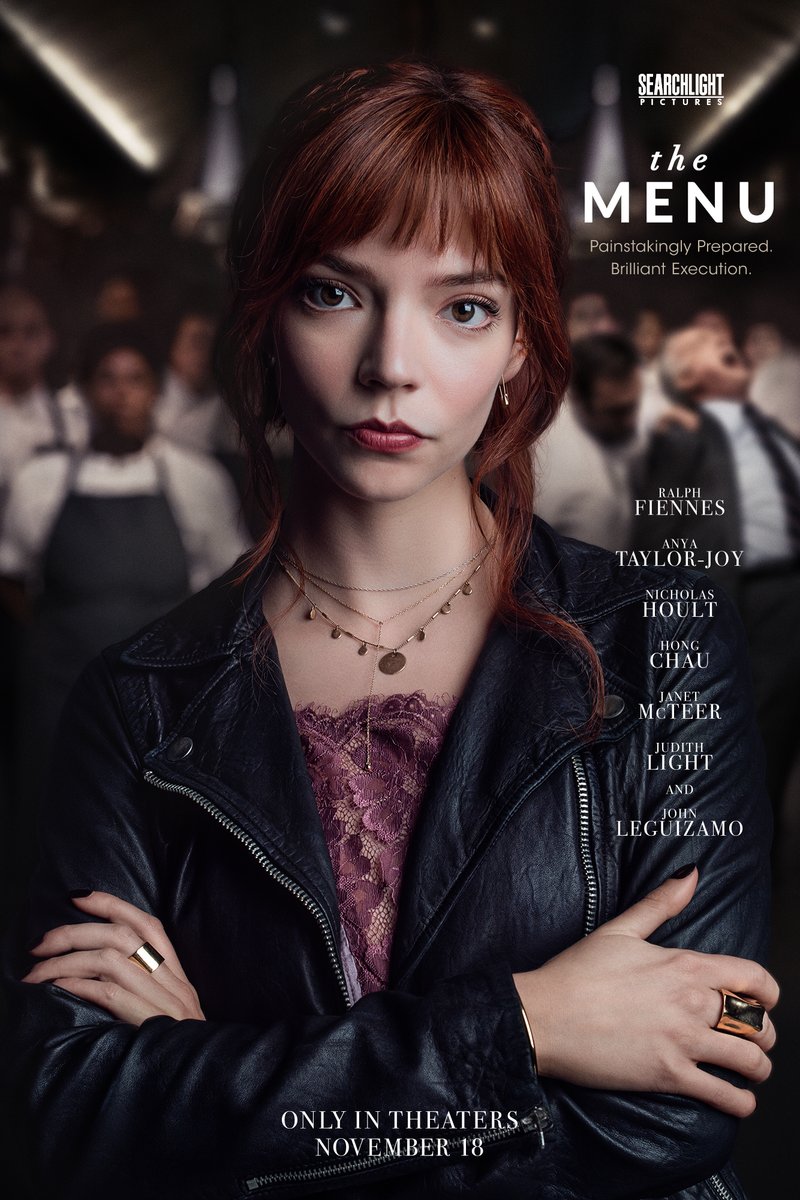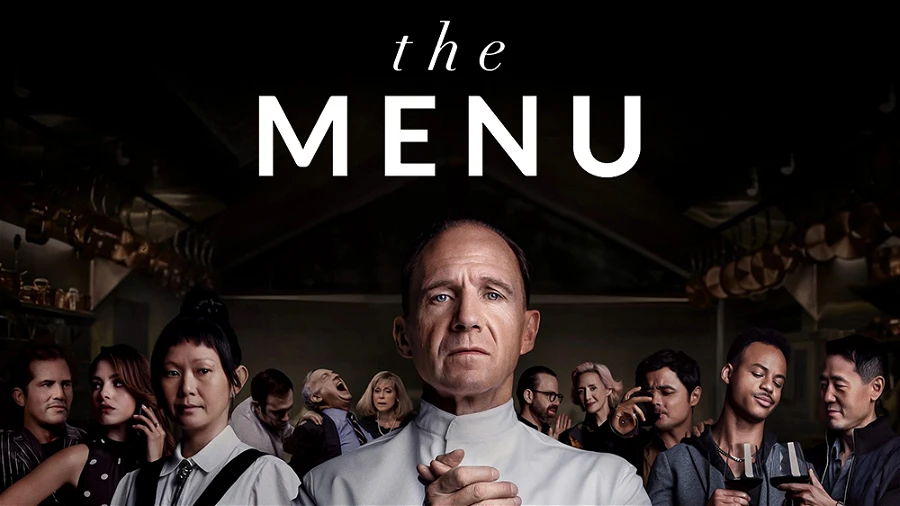The Menu (2022) is a dark comedy thriller that serves a gourmet dish of satire and suspense, making it one of the most talked-about films in recent years. In this in-depth article, we dissect everything about The Menu — from its unique storyline and cast performances to the film’s shocking ending. Whether you’re a cinephile or a casual viewer, this comprehensive guide offers a deeper understanding of what makes The Menu an unforgettable cinematic experience.
Table of Contents
1. Introduction to The Menu (2022)

Released in November 2022, The Menu is a film that blends horror, dark comedy, and satire in a fine-dining setting. Directed by Mark Mylod and written by Seth Reiss and Will Tracy, the movie follows a young couple who visit an exclusive island restaurant run by a mysterious celebrity chef. What begins as a luxurious culinary adventure soon turns into a psychological nightmare, leaving viewers on the edge of their seats.
2. Plot Summary of The Menu
The story begins with Tyler and Margot, a young couple invited to a private dinner at Hawthorne, a world-renowned restaurant on a remote island. Run by the enigmatic Chef Julian Slowik, the restaurant is known for its avant-garde dishes and theatrical presentations. As the night progresses, it becomes evident that this dinner is unlike any other. The guests, all elite members of society, are forced to confront dark secrets, both personal and collective. The dishes served are metaphorical, and each course unravels a deeper truth, leading to a shocking climax.
3. The Cast and Their Roles
- Ralph Fiennes as Chef Julian Slowik
- Anya Taylor-Joy as Margot Mills
- Nicholas Hoult as Tyler
- Hong Chau as Elsa
- Janet McTeer as Lillian Bloom
- Paul Adelstein as Ted
Each actor brings a unique flavor to their character, contributing to the layered storytelling that defines The Menu.
4. Director Mark Mylod’s Vision
Mark Mylod, known for his work on Succession, brings a sharp, satirical edge to The Menu. His direction is precise and nuanced, capturing both the extravagance of haute cuisine and the underlying horror that simmers beneath the surface. Mylod’s ability to balance tension with dark humor is one of the film’s greatest strengths.
5. Character Analysis
- Chef Julian Slowik: A master of his craft, Slowik is both revered and feared. His descent into madness is portrayed with chilling intensity.
- Margot Mills: The only guest not originally invited, Margot becomes the audience surrogate, questioning the absurdity of the evening.
- Tyler: An obsessive foodie who blindly worships Chef Slowik, highlighting the dangers of elitist culture.
6. Themes and Symbolism in The Menu
- Class Disparity: The film critiques the elitism of fine dining and the disconnect between creators and consumers.
- Art vs. Commerce: Chef Slowik’s disdain for his patrons reflects the struggle of artists who feel their work is commodified.
- Identity and Authenticity: Margot’s true identity and her ability to see through the illusion make her a central figure in the narrative.
7. The Use of Satire in the Film
Satire is at the heart of The Menu. The film skewers everything from food critics and social media influencers to tech bros and celebrity culture. Each guest at the restaurant represents a facet of society that the film aims to critique.
8. A Closer Look at the Ending Explained
Without giving too much away, the ending of The Menu is both shocking and cathartic. It serves as a culmination of the film’s themes, delivering justice in a twisted, poetic manner. Margot’s final act is symbolic of reclaiming agency and rejecting the false opulence around her.
9. Behind the Scenes and Production Notes
Filming took place in Savannah, Georgia, with meticulous attention to the restaurant’s design. The culinary consultant team worked closely with the filmmakers to ensure authenticity in every dish presented. The set itself became a character, reflecting the sterile, almost cult-like ambiance of the story.
10. The Menu’s Cinematography and Visual Aesthetics
Peter Deming’s cinematography captures the eerie beauty of Hawthorne. The minimalist design, coupled with strategic lighting, heightens the film’s tension. The plating of food is treated like art, reinforcing the theme of visual over substance.
11. Music and Sound Design
Colin Stetson’s score is both haunting and refined, mirroring the film’s themes. The sound design emphasizes the ritualistic nature of the dinner service, with each clink of cutlery adding to the suspense.
12. Reception and Critical Response
The Menu received widespread acclaim from critics and audiences alike. Praise centered on the performances, especially Fiennes and Taylor-Joy, as well as the sharp script and bold direction. It holds strong scores across major platforms.
13. Rotten Tomatoes, IMDB, and Audience Scores
- Rotten Tomatoes: 88% Critics, 76% Audience
- IMDB: 7.2/10
- Metacritic: 71/100
These scores reflect a strong reception, indicating the film’s success in resonating with viewers.
14. Comparing The Menu to Other Horror Comedies
Similar to films like Ready or Not and Get Out, The Menu uses genre conventions to explore deeper societal issues. Its unique setting and culinary motif set it apart, offering a fresh take on horror comedy.
15. Real-World Inspiration: Fine Dining and Food Culture
The film draws from real-world fine dining culture, parodying the extravagance of tasting menus and the celebrity status of chefs. It questions the value placed on presentation over substance and the performative nature of modern dining.
16. The Menu’s Commentary on Class and Privilege
Each guest represents a societal archetype, from the corrupt finance bros to the out-of-touch food critic. The film’s brutal honesty about privilege and entitlement makes its satire both entertaining and thought-provoking.
17. Ralph Fiennes as Chef Slowik: A Career-Defining Performance
Fiennes delivers a chilling yet sympathetic portrayal of a man disillusioned with his craft. His performance anchors the film, offering depth and complexity to a character who could have easily become a caricature.
18. Anya Taylor-Joy as Margot: Feminist Reading and Rebellion
Margot’s role as the outsider challenges the system from within. Her defiance and intelligence position her as a feminist figure, rejecting both societal expectations and the performative elitism of her surroundings.
19. The Evolution of Dark Comedy in Modern Cinema
The Menu stands as a prime example of how dark comedy can be used to explore serious themes without losing entertainment value. It reflects a trend in modern cinema that blends genre with social commentary.
20. Final Thoughts and Review Summary
The Menu (2022) is a masterfully crafted film that delivers more than just a horror story. It is a sharp critique of modern society, wrapped in a darkly comedic, beautifully shot, and impeccably acted package. For those who appreciate intelligent cinema, The Menu is a dish best served with critical thought and reflection.
Whether you’re looking to analyze the film’s layered themes, appreciate its cinematic qualities, or simply understand why it’s become a cult favorite, this article offers a full-course exploration of The Menu (2022).
Source and Reference
IMDB, https://www.imdb.com/title/tt9764362/


